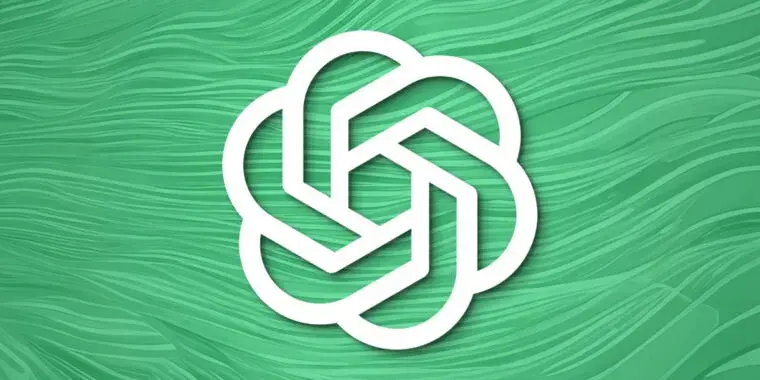Apparently, stealing other people’s work to create product for money is now “fair use” as according to OpenAI because they are “innovating” (stealing). Yeah. Move fast and break things, huh?
“Because copyright today covers virtually every sort of human expression—including blogposts, photographs, forum posts, scraps of software code, and government documents—it would be impossible to train today’s leading AI models without using copyrighted materials,” wrote OpenAI in the House of Lords submission.
OpenAI claimed that the authors in that lawsuit “misconceive[d] the scope of copyright, failing to take into account the limitations and exceptions (including fair use) that properly leave room for innovations like the large language models now at the forefront of artificial intelligence.”



What you count as “one” example is arbitrary. In terms of pixels, you’re looking at millions right now.
The ability to train faster using fewer examples in real time, similar to what an intelligent human brain can do, is definitely a goal of AI research. But right now, we may be seeing from AI what a below average human brain could accomplish with hundreds of lifetimes to study.
I mean, no, if you only ever look at public domain stuff you literally wouldn’t know the state of the art, which is historically happening for profit. Even the most untrained artist “doing their own thing” watches Disney/Pixar movies and listens to copyrighted music.
If we’re going by the number of pixels being viewed, then you have to use the same measure for both humans and AIs - and because AIs have to look at billions of images while humans do not, the AI still requires far more pixels than a human does.
And humans don’t require the most modern art in order to learn to draw at all. Sure, if they want to compete with modern artists, they would need to look at modern artists (for which educational fair use exists, and again the quantity of art being used by the human for this purpose is massively lower than what an AI uses - a human does not need to consume billions of artworks from modern artists in order to learn what the current trends are). But a human could learn to draw, paint, sculpt, etc purely by only looking at public domain and creative commons works, because the process for drawing, say, the human figure (with the right number of fingers!) has not changed in hundreds of years. A human can also just… go outside and draw things they see themselves, because the sky above them and the tree across the street aren’t copyrighted. And in fact, I’d argue that a good artist should go out and find real things to draw.
OpenAI’s argument is literally that their AI cannot learn without using copyrighted materials in vast quantities - too vast for them to simply compensate all the creators. So it genuinely is not comparable to a human, because humans can, in fact, learn without using copyrighted material. If OpenAI’s argument is actually that their AI can’t compete commercially with modern art without using copyrighted works, then they should be honest about that - but then they’d be showing their hand, wouldn’t they?
It isn’t wrong to use copyrighted works for training. Let me quote an article by the EFF here:
and
What you want would swing the doors open for corporate interference like hindering competition, stifling unwanted speech, and monopolization like nothing we’ve seen before. There are very good reasons people have these rights, and we shouldn’t be trying to change this. Ultimately, it’s apparent to me, you are in favor of these things. That you believe artists deserve a monopoly on ideas and non-specific expression, to the detriment of anyone else. If I’m wrong, please explain to me how.
Humans benefit from years of evolutionary development and corporeal bodies to explore and interact with their world before they’re ever expected to produce complex art. AI need huge datasets to understand patterns to make up for this disadvantage. Nobody pops out of the womb with fully formed fine motor skills, pattern recognition, understanding of cause and effect, shapes, comparison, counting, vocabulary related to art, and spatial reasoning. Datasets are huge and filled with image-caption pairs to teach models all of this from scratch. AI isn’t human, and we shouldn’t judge it against them, just like we don’t judge boats on their rowing ability.
AI don’t require most modern art in order to learn to make images either, but the range of expression would be limited, just like a human’s in this situation. You can see this in cave paintings and early sculptures. They wouldn’t be limited to this same degree, but you would still be limited.
It took us 100,000 years to get from cave drawings to Leonard Da Vinci. This is just another step for artists, like Camera Obscura was in the past. It’s important to remember that early man was as smart as we are, they just lacked the interconnectivity to exchange ideas that we have.
I think the difference in artistic expression between modern humans and humans in the past comes down to the material available (like the actual material to draw with).
Humans can draw without seeing any image ever. Blind people can create art and draw things because we have a different understanding of the world around us than AI has. No human artist needs to look at a thousand or even at 1 picture of a banana to draw one.
The way AI sees and “understands” the world and how it generates an image is fundamentally different from how the human brain conveys the object banana into an image of a banana.
Humans learn mostly from real life. Go touch some grass